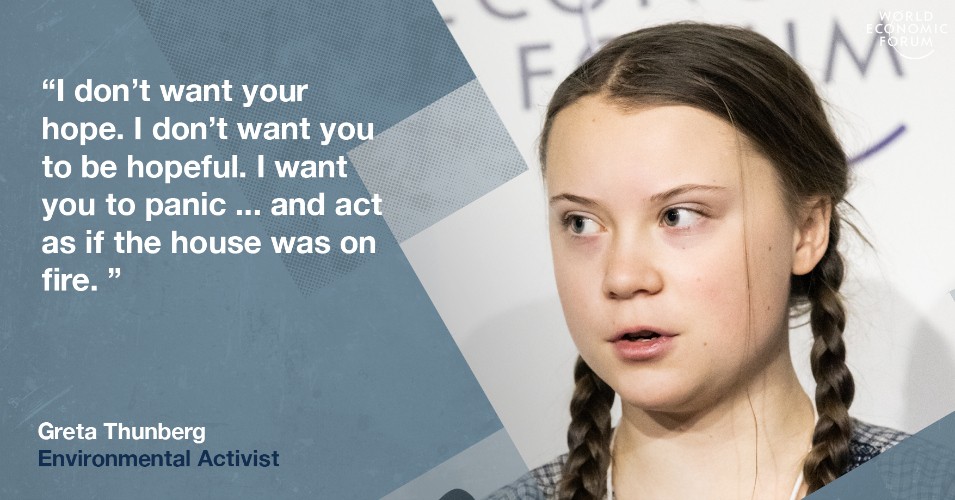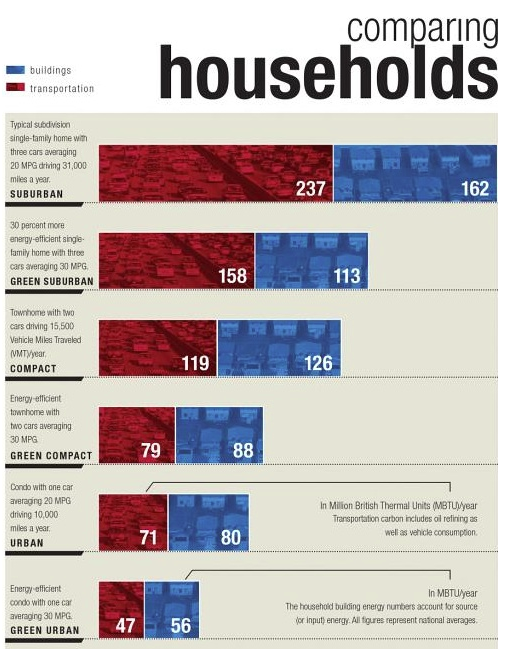
Climate policy is taking center stage in the Seattle City Council District 4 race. Shaun Scott was an early backer of the Seattle Green New Deal, a climate justice-centered response that seeks to meet the scale of the climate crisis while also lifting up disadvantaged communities. He’s boldly proposing deep reform of our land use and transportation system to greatly reduce our carbon footprint and snap up us out of our suburban sprawl death spiral.
Alex Pedersen released a 18-point plan–after making it through the primary–that tries to make sure we don’t go too far, while often piggybacking on Mayor Jenny Durkan’s plan or Governor Jay Inslee’s plans where it’s easy. We wouldn’t want to lose too many parking spaces as we try not to scorch the planet!
In fact, Pedersen indicated he wanted to bring back parking minimums, which the City has dropped in Urban Villages and Frequent Transit Areas. Bringing back parking minimums in our most transit-rich areas wouldn’t just lead to higher carbon emissions, it’d also kill many affordable housing projects. And it’s built on a false narrative of scarcity–in reality only about half of our city’s copious parking supply is used on a daily basis.
Pedersen’s parking pandering is also built on the idea that we have more time to take climate action when we don’t. That’s how Pedersen convinced himself (and likely some of “4 to Explore” blog followers) to vote against Sound Transit 3, even as folks like us pointed out the huge climate benefits and urgency. Why take action in 2016 when you can kick the can down the road and search for a mythical perfect plan with no downsides? And you can always delete the blog once you run for office–and that’s what Pedersen did. Bye bye posts opposing ST3, the Move Seattle levy, and the Mandatory Housing Affordability upzones.
Meanwhile, he’s criticized the Seattle Green New Deal for lacking focus and funding sources, despite Scott offering several in his platform.
Still some are convinced by his sleight of hand, including apparently Cathy Tuttle, former D4 candidate. Tuttle, along with Scott, earned The Urbanist’s dual primary endorsement for her climate focus and history leading grassroots groups like Seattle Neighborhood Greenways. She took to the District 4 Facebook page to decry Scott’s tactics and play “both sides” games.
Alex Pedersen and Shaun Scott are both working–as we all must be–on defining strong city climate policies and actions. That’s why I’m disappointed by Mr. Scott’s assertion in The Stranger: “I believe climate change is real and that cities can do something to address it, and Alex Pedersen does not.”
Cathy Tuttle, District 4 Facebook page
What ensued was a maelstrom of 262 comments and counting. With a tact like that, Tuttle has declined to endorse Scott. When pressed in the comments what she was trying to accomplish, “Alex and Shaun each have unique talents that will be needed to transform our world quickly into a low carbon future,” Tuttle said. “Shaun is a good communicator. Alex is a diligent worker. Climate change will soon demand the best from all of us. My advice is no matter who is elected, stay engaged and make sure all government policies and funding decisions substantially lower our energy use — and look for the good in everyone.” A Hallmark moment, even as Tuttle (like Scott) continues to regularly cite Greta Thunberg, who has a markedly different tact. “I don’t want your hope,” she told the global elite in Davos. “Act as if the house was on fire.” Thunberg has no patience for wishy-washy politicians. Tuttle clearly does.

I reached out to Tuttle to give her chance to clarify her position and endorse if she so chooses. She declined suggesting Scott’s platform lacked enough detail for her to judge. I also reached out to Emily Myers, who ran on climate as well and just narrowly edged out Tuttle for third, to see if she had thoughts on the climate plans or an endorsement. I’ve yet to hear back.
For his part, Scott was right that climate just wasn’t a significant part of Pedersen’s platform until after the primary, which helps explain why environmental organizations that did weigh–like Sierra Club, for example–endorsed Scott. He skipped transportation and climate forums left and right, and snubbed many questionnaires including both ours and Seattle Subway’s. The latest forum Pedersen is skipping is the Urban Indian Experience and Green New Deal Seattle Forum on October 18th. Even after belatedly adding climate positions, Pedersen’s clearly has the weaker vision, despite being more long-winded. Now to the plans.
Shaun Scott’s inspiring climate justice vision
Shaun Scott rightly identifies the connection between exclusionary land use and our collective carbon footprint. He’s been adamant that restrictive, carbon-intensive single-family zoning must go to allow green social housing across the city: “The Seattle City Council could correct our current zoning code, which makes apartment buildings illegal in 75% of the city, and build public housing developments that comply with green LEED certifications.” Single-family zoning’s roots trace back to racial exclusion and its persistence exacerbates segregation and keeps carbon footprints from shrinking as quickly.

In his platform, Scott is direct and to the point: “And if we gave everyone free public transit—or at least gave employers ‘climate passes’ to fund transit passes for working Seattleites—we could decrease our carbon emissions by getting people out of cars.” (Just wait until you hear Pedersen’s tortured alternative to this about bringing business to the table, being reasonable, and careful not to pile on requirements.)
Unlike Pedersen, Scott supports decongestion pricing with an equity mechanism: “Seattle should implement congestion pricing, following the city of London, which raised $1.6 billion of revenue with tolls in ten years.” He wants to use proceeds to fund his ambitious Seattle Green New Deal vision, which includes more bus lanes, bike lanes, sidewalks, and safer intersections.
Lastly and most importantly, Scott underscores the climate urgency of our moment.
Climate change is not “coming.” Climate change is here. Already, people in Africa, Asia, and Latin America are being displaced due to rising sea levels and catastrophic weather events. Into the next century, climate refugees will be the new face of immigration to cities like Seattle. They’ll find a city that did what was possible, did what was necessary, and—as a result—seemed to do the impossible. If we implement a Seattle Green New Deal, those on the way, and those already here, will find a city that is a true sanctuary from the ravages of climate change.
Shaun Scott, “Seattle Green New Deal”
Pedersen’s transportation priorities
Sometimes dividing your plan into 18 points indicates substance, depth, and organization of thought. Not in this case. It’s a grabbag of random solutions and non-solutions. In the introduction, Pedersen emphasizes that he doesn’t have a rigid ideology even when it comes to saving the planet. Complain to him and he’ll be all ears, and–assuming you’re a homeowner or business owner–he insinuates he’ll do something about it.
The 18-point climate plan is actually below his transportation priorities, which are somehow compartmentalized from it despite transportation representing the majority of Seattle’s carbon emissions. That’s how you can get bullet points like “Be Practical Again About Parking: Require at least a modest amount of parking spaces within new residential and office developments.” Bringing back parking requirements in urban villages is not a climate fix. Quite the opposite. Same when he lists “preserve street parking” as a priority. It may sound “commonsense-y” to some ears, but it blocks hopes of bus lanes, bike lanes, wider sidewalks, and safe street rechannelizations. He’s simply pandering to homeowner groups on these ones–a common theme. It’s not someone acting like we have 11 years to cut our carbon emissions in half to avoid climate meltdown–like the scientists are telling us.
Pederson’s Transportation Plan: Subsidize ridehailing companies. “Solve the problem of ‘First and last mile,'” to light rail, Pedersen begins, but what does he have in mind? Turns out: “Discounts for those riding Uber/Lyft to a light rail station.” The link he included also reminds voters Pedersen opposes raising the fee on ridehailing companies like Mayor Jenny Durkan proposed in order to fund transit projects, affordable housing, and driver protection efforts. “To solve the first and last mile, Seattle could tap its innovative spirit and collaborative business community to get more people to ride public transit while reducing carbon emissions,” Pedersen wrote, ignoring that Uber and Lyft haven’t been terribly collaborative, refusing to share rider data, and obstructing labor rights. Plus, studies show Uber and Lyft compete with transit rather than complimenting it, and thus may not be the climate solution he portrays.
Despite news that King County Metro’s Ride2 shuttle program has been expensive and unreliable, Pedersen is still pushing that as an “innovative” solution. “Whichever pilot projects move the most people in the most cost-effective manner, City Hall should help to expand.” Will he recognize that data when it comes in, considering early data has already suggested on-demand shuttles just aren’t very efficient in Seattle?
Pedersen’s 18-point “climate plan”
- Let’s do what Mayor Durkan said in her 20-page climate action report. Phew that was easy. Too bad, the Mayor’s plan is wholly inadequate to the scale of the climate crisis.
- Better tracking technology. Because if you’re proposing very drastic action, at least “leveraging technology” sounds fancy and may buy some time. We know emissions are going up when they should be going down, but know we will be able to say that more precisely. It’s almost a solution.
- “Encourage more use of solar.” This would have been revolutionary… In the 1990s. (For more on solar, read our piece that actually gets into the challenges and opportunities.)
- “Protect and Expand our Tree Canopy.” Hard to argue with tree canopy, except that this seems a nod to homeowner groups that sought to block infill development with tree concerns. While we need to protect tree canopy, we need to ensure housing for many more people in Seattle where the carbon footprint is much lower than far-flung suburbs.
- “Convert City fleets to Green Faster.” Rather than talk about the broader transportation system, Pedersen introduces a bit of a red herring here in focusing on the City government’s fleet of vehicles, again to buy everyone else time: “City Hall should not expect residents and small businesses to change their transportation behaviors radically and rapidly if the city government and other large institutions are not leading by example.” The fiscal conservative now proposes spending big to decommission vehicles and buy expensive new electric zero-emission vehicles just to prove a point to everyone else. In actuality, we must work to change transportation behaviors well before we’ve had the time and money to completely phase out carbon-emitting vehicles from government fleets. Plus, shrinking the size of fleets overall must be a goal. Embodied carbon is a big issue too, and one electrification doesn’t solve.
- “Get more people to ride Sound Transit’s light rail.” No one ever thought of that before. Just kidding. Unfortunately, ridehailing schemes are not going to get the job done.
- Milk run buses and second-guessing successful bus restructure. Pedersen said he supports “supplemental bus service for Seattle residents” referring to the Seattle Transportation Benefit District–“as long as Metro & SDOT do a better job engaging riders to provide the bus service they actually want.” Pedersen says “Metro should restore commuter bus lines cut since 2015,” but he ignores that the U Link Restructure was wildly successful, stretching frequent service across much of Northeast Seattle, replacing low-performing routes, and attracting big ridership gains.
- Require developers to pay for transit or block zoning variances? It’d be nice if high-quality sidewalks and transit just magically materialized. Pedersen suggests by blocking zoning variances we could force developers to fund transit or at least private shuttles? It’s not clear what exactly he’s after besides performing a facile “blame the developers” narrative.
- Consult with businesses to expand Commute Trip Reduction program. Sounds good, but Pedersen’s addition to plans already in motion (thanks to Seattle Transit Riders Union Orca 4 All campaign) is again reining in climate activists rather going for a bolder plan: “City Hall needs to be careful not to pile on requirements for businesses while also exploring reasonable ways to reduce single occupant vehicle trips.” He says we should first consult businesses “respecting their knowledge, costs, and constraints.” If only climate change moved as slowly as the Seattle process.
- Phase out two-stroke leaf blowers with a buy back program. Again Pedersen takes a good idea and twists himself into knots to make it more palatable to reactionaries. Two-stroke leaf blowers are terrible for the environment and are preeminently obnoxious spreading noise pollution and particulate pollution. Instead of just banning them, Pedersen wants a buy-back program so that getting rid of this problem also costs the government a lot of money. Not so fiscally conservative on this one, are we? Plus, instead of promoting good old fashioned rakes and brooms, Pedersen recommends electricity-powered leaf blowers which would still leave us with the noise pollution problem and irritants in the air.
- Enable the Port to electrify. The Port is “enabled” to electrify their dock facilities (so that ships and planes don’t burn dirty fuels while docked) now. The question is how quickly we either force or incentivize them to finish the job. Governor Inslee aims to “green” the port by 2050, and the Port already has plans to electrify three cruise ship berths. What additionally Pedersen is proposing is not clear. Maybe just wants to get invited to the ribbon-cutting.
- Just transition for workers through training. Pedersen says he wants a just transition to the cleaner economy for workers, but only names “training and other tools” as the mean. Thus he falls into the neoliberal paradigm that education and training are enough to deal with structural inequality in our economy. It seems very doubtful that’s enough to guarantee a “smooth transition” for workers, but it does greenwash his campaign in Seattle Green New Deal-style language without any of the actual commitment to partner with communities of color.
- Require a “Carbon Note” with every new program and ordinance. Pedersen cites his former opponent Cathy Tuttle for this idea. Including carbon notes like we do fiscal notes is not a bad idea and could help leaders build a case around climate urgency, if that’s a case they’re interested in making. In Pedersen’s centrist hands, it’s likely to be a box to check to further the status quo.
- Ask regional organizations to help. He just talks about a few more plans already in motion here. The Puget Sound Clean Air Agency needs “to update their Strategic Plan to address new climate resiliency threats like smoke from forest fires.” Okay, sure. He notes that Governor Jay Inslee is leading on some climate stuff. Yes, we had heard.
- Leverage resiliency plans from science-based institutions like UW. Pedersen notes that there are climate resiliency plans out there that could be useful. For candidates that don’t have particularly strong climate plans of their own, this is especially useful.
- Dump Trump. Obviously this would help on this and a million other issues. Didn’t know it had to be stated in a climate plan. This is an example of the Proximity Law of Politics that local candidates would prefer to nationalize rather than talk about tough choices to be made in Seattle.
- Vote against Tim Eyman’s I-976. A good idea; The Urbanist also endorsed a No on I-976. We agree that it would gut Sound Transit (not to mention transportation departments statewide.) But, while we endorsed Sound Transit 3, Pedersen opposed it. It’s too bad he wasn’t onboard the whole time to get “more people to ride light rail to maximize the public’s investment, to reduce greenhouse gas emissions, and to keep people moving throughout our region.”
- Affordable housing near reliable mass transit. Urbanists love affordable housing and mass transit, and the two together are a symphony to our ears. However, Pedersen’s answer goes off the rails when he said “City Hall needs to be both cautious about where it allows increased density.” The City now boasts that 70% of Seattle lives within a 10-minute walk of frequent transit. The idea that wide swaths of Seattle are not suitable to higher density is a fairytale. We have really good transit. No serious climate plan would freeze any neighborhood in amber.
So, as you can see, we have one serious climate action plan in this race. And then we have one plan for climate delay. If you hope to put out the fire instead of just roast marshmallows as the planet burns, vote for Shaun Scott.
Author’s Note: As Alex Pedersen’s noted when asked about my last article on his record and plans, I did donate to the Scott campaign. A grand total of $27 in cash and $50 in democracy vouchers. And I might donate a little more, too, considering what’s at stake. But, unlike Amazon, which donated $450,000 to CASE PAC and is backing Pedersen, I’m not made of money.
Doug Trumm is publisher of The Urbanist. An Urbanist writer since 2015, he dreams of pedestrianizing streets, blanketing the city in bus lanes, and unleashing a mass timber building spree to end the affordable housing shortage and avert our coming climate catastrophe. He graduated from the Evans School of Public Policy and Governance at the University of Washington in 2019. He lives in East Fremont and loves to explore the city on his bike.




